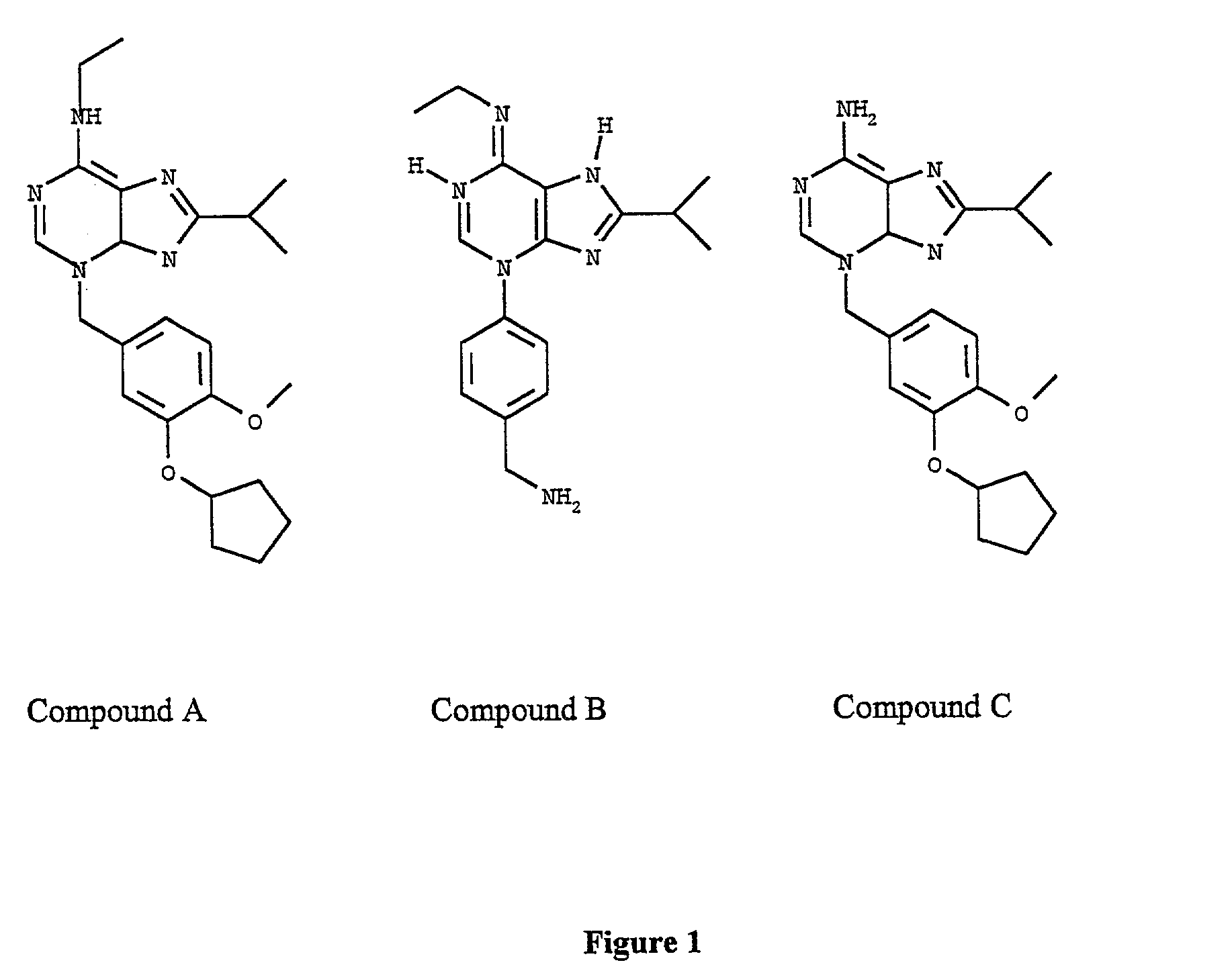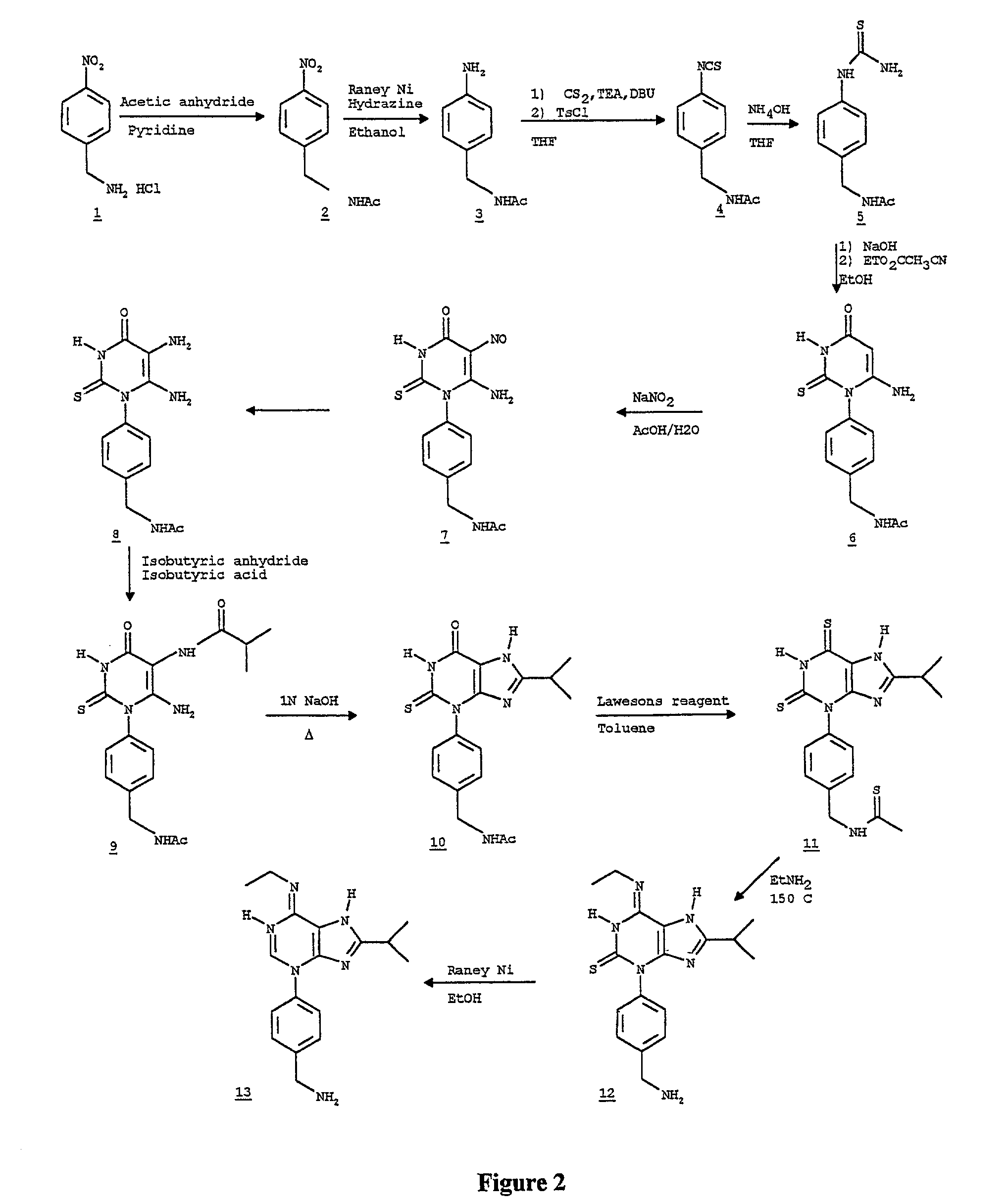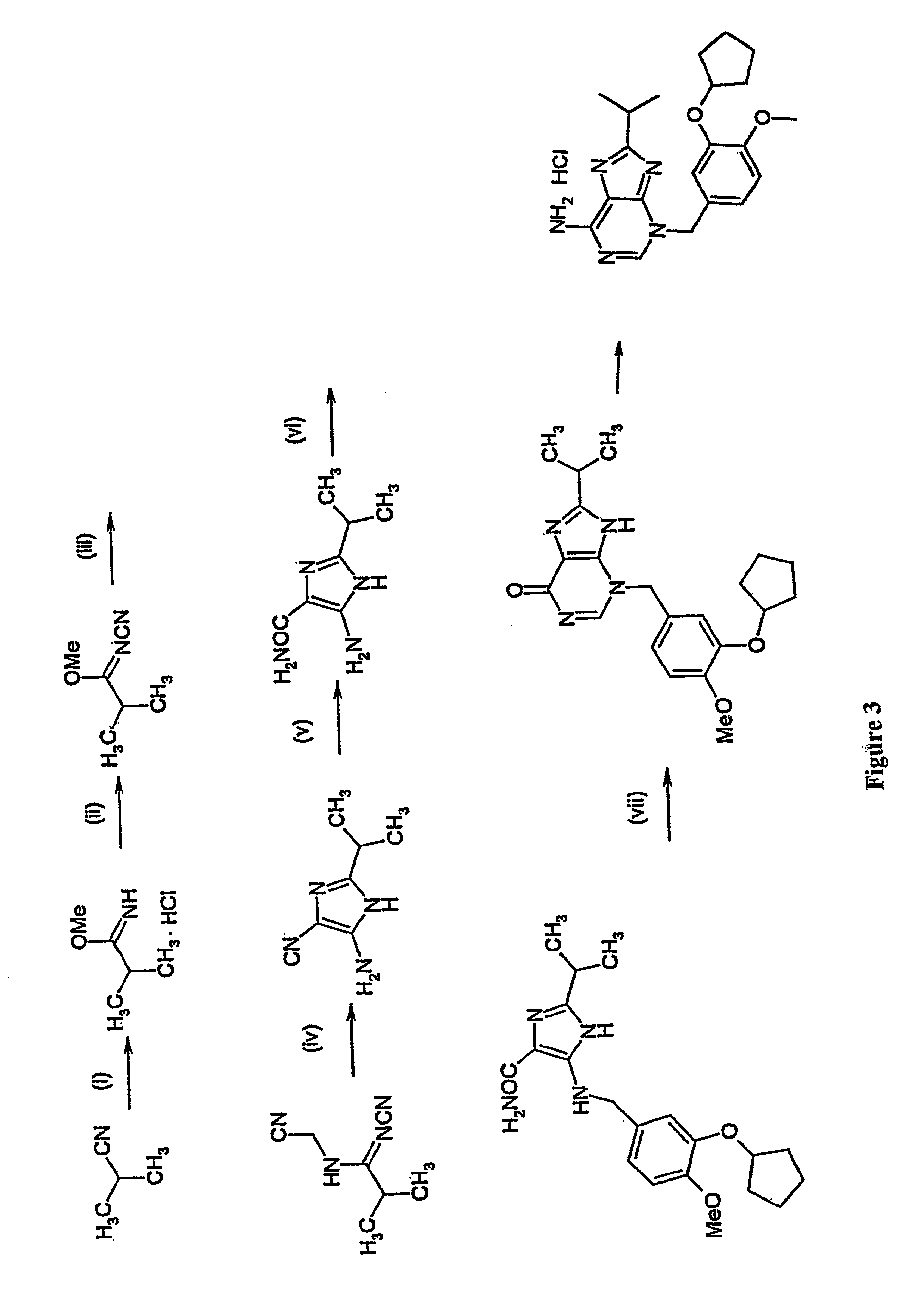Method of defining genus of chemical compound and method of designing molecules
a technology of chemical compound and design method, which is applied in the field of defining genus of chemical compound and designing molecule, can solve the problems of negating the opportunity for structure-based approaches to new chemical entities, simplifying energy functions used to calculate thermodynamic parameters and docking scores, and reducing the sensitivity of high-throughput screening. , to achieve the effect of increasing the sensitivity and specificity of high-throughput screening
- Summary
- Abstract
- Description
- Claims
- Application Information
AI Technical Summary
Benefits of technology
Problems solved by technology
Method used
Image
Examples
Embodiment Construction
[0177] In Example 1, a compound having a generic binding site to Compound A is subjected to high-throughput screening as follows:
[0178] First Compound B is synthesized according to the process as set forth FIG. 2 and explained below.
[0179] a) Synthesis of p-nitrobenzylacetamide (FIG. 2, product 2): A 500 ml 3-neck flask fitted with a reflux condenser and a thermometer was charged with 150 ml pyridine. The reaction was cooled to 0.degree. C. in an ice bath with magnetic stirring. The 4-nitrobenzylamine hydrochloride (1) (25 g, 0.133 mol) was added in two 12.5 g portions each followed by acetic anhydride (8.1 g, 0.08 mol each addition). The temperature rose to ca. 10.degree. C. and was allowed to cool back down to 0.degree. C. before the next addition. After the second addition a precipitation began to form. The reaction was stirred for 30 min more at 0.degree. C. and then removed from the ice bath and allowed to warm to room temperature over another 30 minutes. The reaction was dilut...
PUM
| Property | Measurement | Unit |
|---|---|---|
| Molar mass | aaaaa | aaaaa |
| Molar mass | aaaaa | aaaaa |
| Dissociation constant | aaaaa | aaaaa |
Abstract
Description
Claims
Application Information
 Login to View More
Login to View More - R&D
- Intellectual Property
- Life Sciences
- Materials
- Tech Scout
- Unparalleled Data Quality
- Higher Quality Content
- 60% Fewer Hallucinations
Browse by: Latest US Patents, China's latest patents, Technical Efficacy Thesaurus, Application Domain, Technology Topic, Popular Technical Reports.
© 2025 PatSnap. All rights reserved.Legal|Privacy policy|Modern Slavery Act Transparency Statement|Sitemap|About US| Contact US: help@patsnap.com



